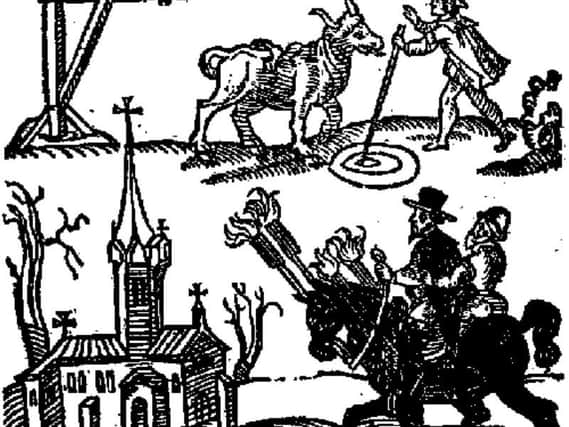Who were Scotland's little-known male witches?


At least 3,200 people were accused of witchcraft during the period with women accounting for around 85 per cent of suspects, slightly higher than the European average.
But records show there were 468 cases that involved men, according to the Survey of Scottish Witchcraft.
Advertisement
Hide AdAdvertisement
Hide AdProfessor Julian Goodare, a professor of history at Edinburgh University who helped devise the survey, said: "It is a very high female majority but on the other hand, there is no assumption that witches have to be women.
"People sometimes ask if the word witch only applies to a woman and what word should we use for the men that were accused. Well, we call them witches. You don't have to call them warlocks."
They included Alexander Drummond, a healer of Auchterarder, who treated people around Scotland for 50 years.
He is believed to have been around 75 when he was strangled and burned in 1629 with a campaign to have his name cleared winning broad support.
Drummond was held at the Tolbooth in Stirling in 1628 and then transported to Linlithgow and Edinburgh Tolbooth as the case against him was build.
"Drummond made a direct challenge to the church saying he was more powerful than ministers because he could give people health," the witchcraft survey.
"In his confessions he said he did do all the healing but that it was not witchcraft," it added.
He was found guilty in Edinburgh on July 3 1629 and strangled and burned the following week.
Advertisement
Hide AdAdvertisement
Hide AdAfter his execution, a campaign was launched to posthumously clear his name with letters written to the King in October and December 1646 in a bid to clear him.
At the North Berwick Witch Trials, Dr. John Fian, a schoolmaster from Prestonpans, East Lothian, reportedly confessed to having a pact with the devil while acting as register and scholar to several witches in North Berwick Kirk.
He was accused of bewitching townsfolk, preaching witchcraft and , along with others, raising storms to sink the fleet of King James VI of Scotland and his wife Anne of Denmark as they returned from their wedding celebrations in Oslo.
He was executed in Edinburgh in January 1591 after a period of torture, during which his feet were crushed so small that he was reportedly unable to walk on them.
Prof Goodare said that there were two definitions of witches. One is someone who harms their neighbours by supernatural spirits and the other is someone who makes a pact with the devil.
He said the definition of the devil as a male could help explain, in part, the far higher proportion of women who were accused of witchcraft.
He said: "There is this idea, which is very common among the elite, that this demonic pact is achieved by sex with the devil
"There are a number of cases where the suspect is asked who they were with, when they met with the devil and when did they have sex with the devil.
Advertisement
Hide AdAdvertisement
Hide Ad"But if they have a male suspect, they don't ask about sex with the devil, particularly in Scotland.
He added: "Scottish ministers were particularly interested in sex with the devil
"At the Kirk Sessions, the main sin they seem to police is extra marital sex - fornication and adultery. They are very interested in sex and it seems to spill over into witches and this idea of incredibly naughty witches
"This idea of sex with the devil is exclusively heterosexual. It doesn't seem to work for men. They are just not as interested in male witches."
Prof Goodare said male suspects sometimes came to the attention of the church authorities by their association with women already accused.
He said it was also the case that men sometimes took on a special role in a group of witches.
Prof Goodare said: "In one case, a male accused was a piper in a group. In another, a man was identified as being the devil's cloak bearer. There was sometimes a special individual role given to a man."
Their stories may be less well known, but no less horrifying.